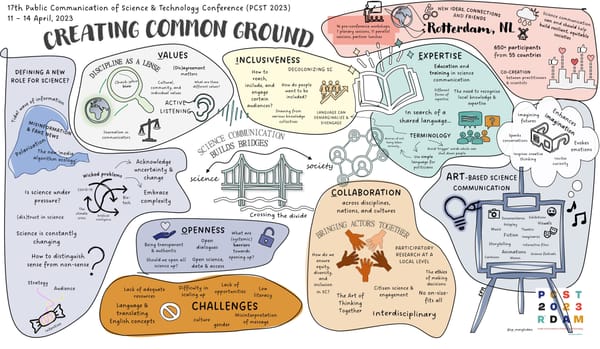Want to change people's behaviour? Then stop telling them what to do.
Giving people information is one of the most used strategies for communicating science. But what if you want the information to actually change behaviour, like stimulating people to adhere to corona measures? This essay discusses the limitations of only giving information on influencing behaviour.

Say you finished a research project and you want to make your knowledge actionable. Or you have scientific facts that you want to translate into a public health policy, for instance to prevent the spread of infectious diseases. The communication grid of Betteke van Ruler describes four communication strategies that you can use, divided along two axes: is the communication one-way or two-way (i.e. are there one or more senders) and is the communication aimed at revealing or influencing. Informing is one-way communication with the aim of revealing[1].

Giving people information is an important and frequently used tool in the toolbox of (science) communication professionals. The popular assumption is that giving people information will change their attitude towards a topic. And a changed attitude will lead to a change in behaviour. But this idea is outdated; transferring knowledge does not necessarily lead to a change in behaviour in this linear way[2]:
- It is difficult and sometimes impossible to get the attention for a message (e.g. the sign to keep to the 1.5 metre rule can escape your attention amidst all the marketing stimuli in a store[3]).
- A change in knowledge does not always result in a change in attitude[4] (e.g. you can understand the 1.5 metre rule but think that you will not get sick anyway).
- A change in attitude does not always result in a change in behaviour (e.g. you can think it is important that everyone follows the 1.5 metre rule and violate it yourself, consciously or unconsciously).
The often quoted knowledge-changes-attitude-changes-behaviour trite occurs more often in the reverse order: people exhibit behaviour - consciously or unconsciously - that they try to underpin by adopting an appropriate attitude, which they underpin with selective facts. Think, for example, of not complying with the corona measures because someone believes in a conspiracy theory.
Designing a successful behavioural intervention requires a thorough analysis of the problem. For example, the approach to influence automatic behaviour (e.g. the measure of keeping 1.5 metre distance) differs from influencing planned behaviour (e.g. the measure that allows only one visitor per household per day). The added value of giving information differs per approach: for planned behaviour, information plays a bigger role than for automatic behaviour. And that determines which methodologies can best be applied. Do you use the extensive Intervention Mapping or Behaviour Change Wheel method, for example, or is one or more of Cialdini's seven influencing interventions more suitable?
Our ability to act rationally on information, even factual information, is limited.
Another limitation of informing is that knowledge that is transferred is not necessarily interpreted in the same way by each recipient. As Van Ruler sometimes puts it: Meaning is in the head, not in the message. Information can therefore influence behaviour in unintended or unexpected ways. For example, an elegant study from 2013 shows that people can draw the wrong conclusion from a simple, unambiguously interpretable set of data depending on their political persuasion. Our ability to act rationally on information, even factual information, is limited.
Finally, the behavioural sciences teach us that behaviour often comes about unconsciously[5]. The rational, conscious system of people[6], which is served by information, requires energy and focus. The automatic, unconscious system works faster and is therefore often given priority: our brain would rather be fast than 100% correct. As a result, people often know the 1.5 metre rule, even understand it, but do not follow it.
So if you want to change how people act, stop telling them what to do and start listening to what they and their fast-thinking brain need.
Footnotes
- According to Van Ruler, informing is "the strategy of the sender who wants to let another person know something, so that this makes him or her think, he or she can form an opinion and, if necessary, take a decision on how to act".
- Pol, L. R., & Swankhuisen, C. E. (2020). Overheidscommunicatie: Een gedragswetenschappelijke aanpak. Uitgeverij Coutinho.
- System 1 as described by Daniel Kahneman constantly makes quick, unconscious choices in the battle for attention.
- Depending on the central (thorough) or peripheral (superficial) processing of information (Elaboration Likelihood Model).
- The government already makes use of this knowledge when communicating corona measures. Of Cialdini's seven principles, for example, the principle Unity is used: "Only together do we get corona under control". In shops, nudging is often used, another way of influencing unconscious behaviour, e.g. by applying red and white chequered tape (a warning sign) on the floor to help people keep 1.5 metres distance.
- System 2 as defined by Daniel Kahneman.




